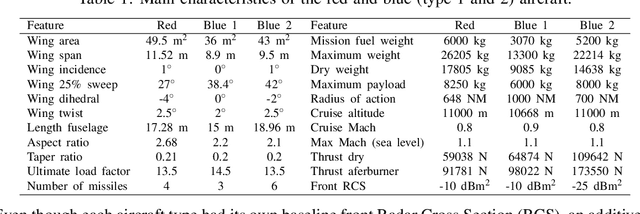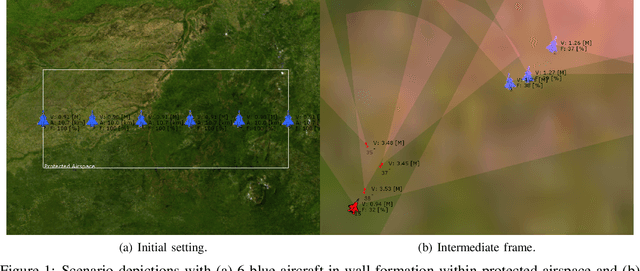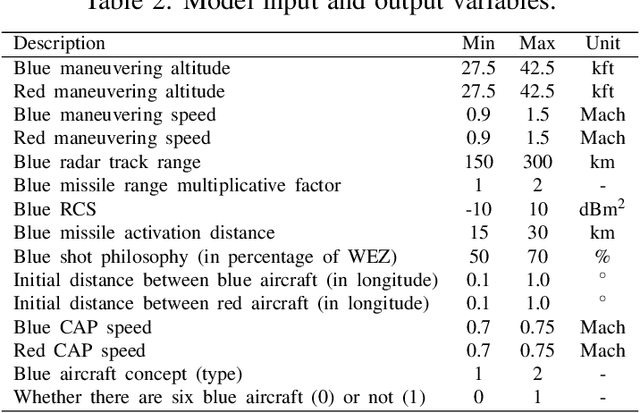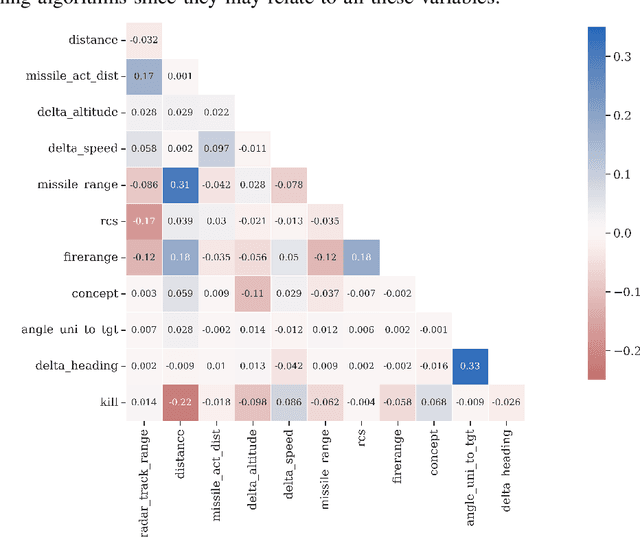Felipe L. L. Medeiros
Real-Time Surface-to-Air Missile Engagement Zone Prediction Using Simulation and Machine Learning
Dec 05, 2023Abstract:Surface-to-Air Missiles (SAMs) are crucial in modern air defense systems. A critical aspect of their effectiveness is the Engagement Zone (EZ), the spatial region within which a SAM can effectively engage and neutralize a target. Notably, the EZ is intrinsically related to the missile's maximum range; it defines the furthest distance at which a missile can intercept a target. The accurate computation of this EZ is essential but challenging due to the dynamic and complex factors involved, which often lead to high computational costs and extended processing times when using conventional simulation methods. In light of these challenges, our study investigates the potential of machine learning techniques, proposing an approach that integrates machine learning with a custom-designed simulation tool to train supervised algorithms. We leverage a comprehensive dataset of pre-computed SAM EZ simulations, enabling our model to accurately predict the SAM EZ for new input parameters. It accelerates SAM EZ simulations, enhances air defense strategic planning, and provides real-time insights, improving SAM system performance. The study also includes a comparative analysis of machine learning algorithms, illuminating their capabilities and performance metrics and suggesting areas for future research, highlighting the transformative potential of machine learning in SAM EZ simulations.
Supervised Machine Learning for Effective Missile Launch Based on Beyond Visual Range Air Combat Simulations
Jul 09, 2022



Abstract:This work compares supervised machine learning methods using reliable data from constructive simulations to estimate the most effective moment for launching missiles during air combat. We employed resampling techniques to improve the predictive model, analyzing accuracy, precision, recall, and f1-score. Indeed, we could identify the remarkable performance of the models based on decision trees and the significant sensitivity of other algorithms to resampling techniques. The models with the best f1-score brought values of 0.379 and 0.465 without and with the resampling technique, respectively, which is an increase of 22.69%. Thus, if desirable, resampling techniques can improve the model's recall and f1-score with a slight decline in accuracy and precision. Therefore, through data obtained through constructive simulations, it is possible to develop decision support tools based on machine learning models, which may improve the flight quality in BVR air combat, increasing the effectiveness of offensive missions to hit a particular target.
 Add to Chrome
Add to Chrome Add to Firefox
Add to Firefox Add to Edge
Add to Edge